The following story was recorded in 1994, from Bill Henderson's book "Escape From The Sea".
For information on Bill's book click HERE
William (Bill Jim) Davis
Electricians Mate First Class
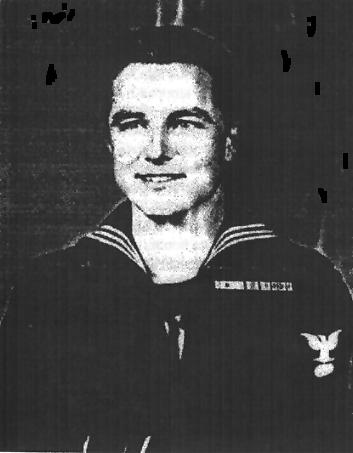
|
I joined the Navy in December 1938. After recruit and trade school training at Norfolk, VA, I was ordered to and reported aboard the Helena in September 1939. I was assigned to the "E" Division in the Engineering Department. The Helena had been commissioned just a few days before I reported aboard.
My brother Roy joined the Navy in 1940. At the time the Navy would assign brothers to the same ship or station if they wanted to serve together. Roy requested and reported aboard the Helena in August 1941, and was also assigned to the "E" Division. At the time the Helena was operating out of Pearl Harbor as a part of the Pacific Fleet.
NOTE: The Navy changed it's policy of allowing brothers to serve together after the five Sullivan brothers lost their lives when their ship the Juneau, was torpedoed by a Japanese submarine in November 1942. (The Helena was within 200 yards of the Juneau when she blew up.)
The Attack On Pearl Harbor
In the weeks preceding that fateful day, the Helena and other units of the Pacific Fleet would routinely go to sea on Mondays for training exercises and return to Pearl Harbor for liberty and recreation on weekends.
On this particular weekend, the Helena was tied up alongside a Navy yard dock, just a few hundred yards across the main channel from Ford Island where seven battleships were moored. Another battleship, the Pennsylvania, was in dry dock no more than 100 yards dead ahead.
Sunday morning, December 7, 1941, prior to 7:55 A. M., was no different than any other Sunday morning we had become accustomed to. Holiday routine was the order of the day. One half of the crew had been given liberty with many still ashore. |
The weather was clear. There was a slight breeze with the temperature in the 70's.
Most of the crew was up and about at 7 A. M. By 7:30 I had finished breakfast. A short time later I reported to my mustering station and had my presence recorded. After talking for a time with shipmates, I left the area and went topside to purchase a newspaper. The time was about 7:45 A.M., ten minutes before the first bomb fell on Ford Island.
Everything topside seemed perfectly normal. Men were lounging around, some reading, some carrying on idle conversation, others strolling in the fresh air. Only a handfull of men were on duty, a few below decks in engineering spaces, a few topside around the gangway and signal bridge and the color guard was preparing to make colors at 8 A.M.
A short time later, I went below to my living quarters which was four decks down, just below the water line. I was standing beside my bunk preparing to lie down when the general alarm sounded. The time was about 7:56 A.M., about one minute after the attack started.
We had been trained to respond to the general alarm by reporting to our battle stations as quickly as possible. But this was Sunday. Never before had we been required to report to our battle station on Sunday Morning.
(To hear "GQ" click on the words below. Speakers on! Download time should be about 15 seconds.)
General Quarters
My first reaction was that someone had accidentally tripped the alarm mechanism because there was no verbal command to "Man your battle stations," which usually accompanied the mechanical alarm over the public address system. As a result, no one rushed. I could hear the men around me griping about having a training exercise on Sunday morning. We reluctantly and slowly started to make our way to our battle stations.
I was no more than a few feet away from my bunk when suddenly there was a tremendous explosion shaking the entire ship. The starboard side of the ship lifted some two or three feet, almost knocking me down. The time was 7:57 A.M. This time is exact. A clock in the forward engine room stopped at this time.
Fear gripped my entire body. I thought a powder magazine had exploded. There was almost panic as we raced to our battle stations.
The scene in and around my battle station, a damage control unit located one deck below the main deck amidships was one of mass confusion. Men were coming and going in every direction. I stopped two of my friends who had been burned by the explosion and asked them what had happened. No one knew. They only knew there had been an explosion in the vicinity of the forward engine room.
The chaotic situation coupled with uncertainty and fear caused me to leave my post and go topside. Surely someone there could tell me what was going on.
When I reached the main deck I could see clouds of smoke rising from the vicinity of Ford Island. The sound and vibration of numerous explosions filled the air. I noticed a few planes but for a moment it did not register what part they played in what was going on. Several of the battleships were listing heavily. The Oklahoma had rolled over on its side. Flame and smoke were everywhere.
Then a plane no more than 200 to 300 feet away and flying at mast-height attracted my attention. I could see every detail of the plane, including the pilot. He dipped his wings lightly as he passed by. The bright red balls on each wing tip were clearly visible. Then it hit me we were being attacked by Japanese planes. The Helena had been torpedoed. We were at war. I can only guess that the plane was the same plane which had torpedoed the Helena and the pilot was taking a close look at the damage done.
There were 191 aircraft in the first wave of Japanese planes. Of this number, 40 torpedo planes and 51 dive bombers were assigned the task of destroying the ships and planes at Pearl Harbor. The remaining planes were assigned other targets on the island.
I recognized the attacking planes as being Japanese approximately two or three minutes after 8 A.M. Our guns were silent. The Japanese were having a field day.
The Helena had been severely damaged. The torpedo had blasted a hole in the starboard side of the forward engine room. The damaged area was forty feet long and the hole at the point of impact was large enough for a man to stand in. The explosion had also damaged the forward boiler room quickly flooding both compartments.
Instantly the ship was without steam, power and lights. As fate would have it, the generator supplying electricity and the boiler supplying steam were located in the forward engine and fire rooms.
The minelayer Oglala, tied up alongside the Helena, was sinking. The torpedo that damaged the Helena had passed under the Oglala but the concussion from the torpedo exploding against the side of the Helena ripped open the wooden hull of the Oglala and she eventually sank.
Our anti-aircraft guns could be fired manually, but needed electricity to be effective. Fortunately, the Helena was equipped with two diesel generators, one forward and one aft of the damaged area. In less than five minutes, power was restored.
Live ammunition was stored in compartments near the ship's bottom. But these spaces were locked, and the gunnery officer who had custody of the keys was ashore on liberty.
The ammunition handlers waited only a few minutes for the keys to arrive, then using axes and bolt cutters they quickly severed the padlocks. In less than ten minutes, ammunition was flowing to our guns.
The exact time the Helena and other ships opened fire is not known, but it had to be at least ten minutes or more after the attack started. Japanese photos taken as late as 8:05 show no anti-aircraft fire.
The first phase of the attack lasted 30 minutes, from 7:55 A.M. to 8:25 A.M. The second wave, consisting of 170 planes struck at 8:40 A.M. Although it seemed much longer, the attack ended shortly after 9 A.M. with Japanese records indicating all but 29 of their planes safely aboard the six attacking carriers by 9:45 A.M.
During and for hours following the attack, I was busy cutting, disconnecting and making tempory hook-ups to by-pass electrical circuits damaged by the torpedo. Between the first and second phase of the attack the officer in chargge of the Damage Control Unit where I was assigned asked for volunteers to remove several bodies located just outside the forward engine room. I didn't volunteer. I had been by this area a few minutes before checking an electrical circuit, and it wasn't a pretty sight. I have never forgotten the wide-eyed, terrified look on the face of one of those men. He was on his hands and knees, seemingly still trying to escape, welded into that position by the fiery blast of the torpedo.
Words cannot describe the tension, the fear, the anxiety we experienced during the remainder of the day. We had suffered devastating loses, but we expected the worse to come.
No one knew where the Japanese force was. We were convinced the Japanese would return for the kill. There were all kinds of rumors from sabotage to troop landings. All proved to be false. The Helena could get underway, but was in no condition to do anything, mush less seek out the enemy. I felt trapped. The thoughts of becoming a prisoner of war became a real possibility.
The night was even worse than the day. Everyone was mentally on edge. No one on the island slept that night. Our gunners were nervous and restless. I witnessed four of our own planes, with running lights on, shot down as they were attempting to land on Ford Island. They had given us advance notice of their arrival, but somehow the word did not reach one of the gunners on the beach. When he opened fire, every gun in the harbor joined in.
As the sun rose on the morning of December 8, the tension began to subside. Fires were still burning out of control. The harbor was a mess with sunken and damaged ships. Oil and debris were everywhere, but confidence began to replace fear of the day and night before.
Americans will always remember Pearl Harbor as the "Day of Infamy" but I remember the surprise, the destruction, the tension and the fear. Although there were many, I do not recall a single feat of herosim. I do remember clearly the courage displayed by the Helena crew acting as a unit.
Few would believed a confused and almost panic-stricken group of men could turn itself around in minutes and become an efficient disciplined fighting force, but it happened. Not only on the Helena, but again and again on other ships and military units in and around Pearl Harbor that fateful day.
Roy and I were aboard the Helena the night of July 5-6, 1943 when the Helena was hit by three torpedoes and sank in three sections, taking 198 members of the crew to the bottom of Kula Gulf. We both survived without a scratch.
In August 1943 I was ordered to the carrier Hornet CV 12, Roy was ordered to the light cruiser Houston, both under construction at the Newport News, Virginia shipyard.
In July 1944, shortly after the Battle of Saipan, I was transferred back to the states for promotion to the rank of Ensign, and served as the Engineering Officer aboard LST 343. I was discharged in February 1946 but was recalled to active duty during the Korean conflict.
I was elected Tennessee State Senator in 1970 and served 12 years as the only Independent in the Senate. Due to redistricting I was unable to run for re-election in 1982. I went to work for the State Farm Insurance Companies in 1987 and as of this date, February 1995, I still hold the same position with them.
To see recent pictures of Bill, click Here.
William Davis Military Awards

Navy Unit Commendation

Good Conduct Medal
|
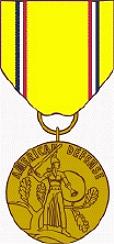
American Defense Medal
|
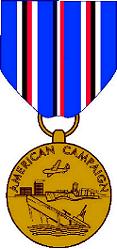
American Campaign Medal
|
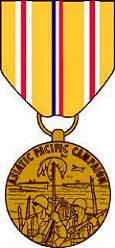
Asiatic Pacific Medal
With Eight (8) Battle Stars
|
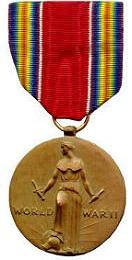
World War II Victory Medal
|

